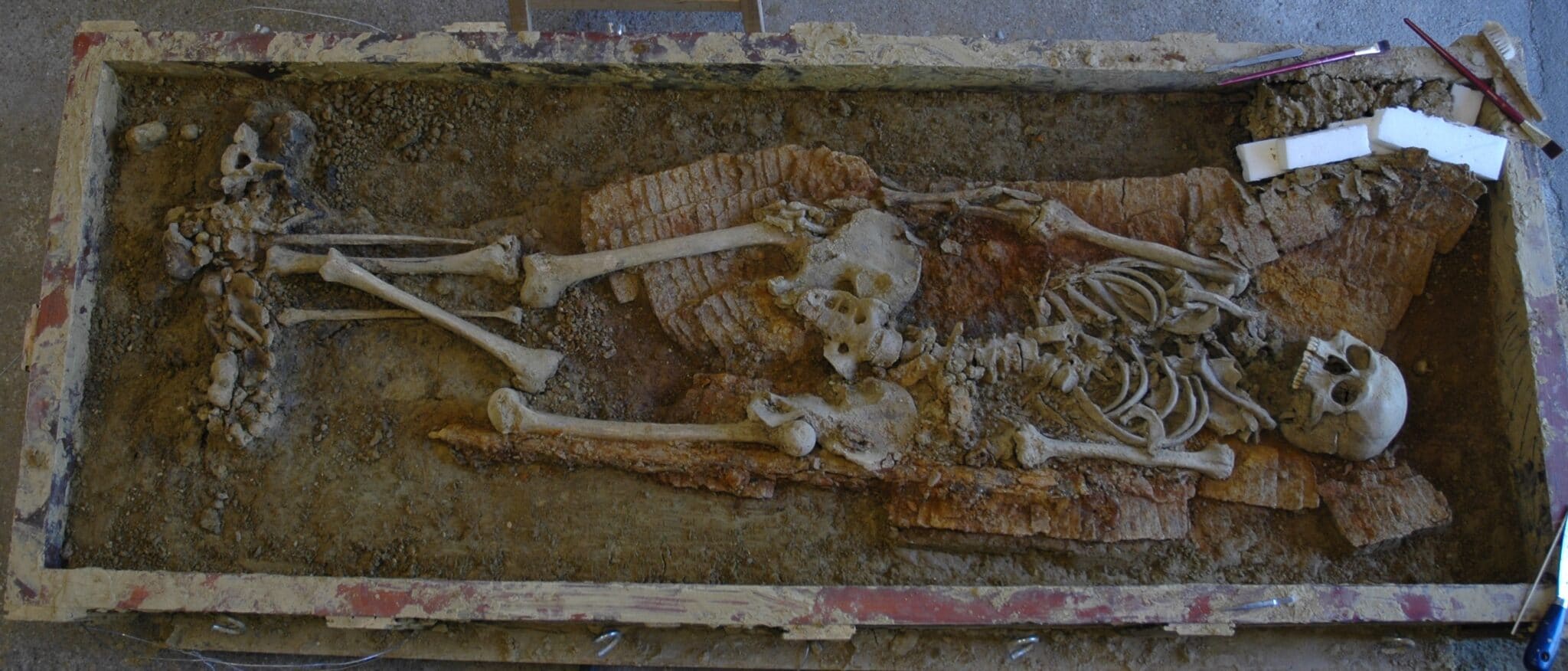
Ancient DNA lifts a corner of the veil.
Hearing the name ‘Avaren’ may not immediately ring a bell. Yet you should not underestimate this European superpower. In the 560s, the Avars established an empire that lasted for more than 200 years, centered on the Pannonian Plain, located in central/southeast Europe. Their origin and provenance have been widely debated. A new study now sheds new light on the 1,400-year-old mystery about the genetic origins of this once-powerful people.
The Avars
Despite much scholarly debate, the original homeland and provenance of the Avars has remained unclear. The Avars are mainly known from historical sources of their enemy, the Byzantines, who after their sudden appearance in Europe wondered where those fearsome Avar warriors came from. Were they from the Rouran Empire in the Mongolian steppe, which had just been destroyed by the Turks, or are you to believe the Turks who strongly dispute that?
Origin
Historians have questioned whether the Avars were a well-organized migrant group or a mixed bunch of fugitives. Archaeological research, however, has uncovered many parallels between the Pannonian Plain and Eurasian nomadic artifacts – think weapons, ships, and horse harness. We also know that the Avars introduced the stirrups (which are used to mount a horse and support the rider’s feet while riding) in Europe. Yet scientists have not yet managed to trace their origins in the vast Eurasian steppes.
Study
In a new study, researchers made another frantic attempt. This time they focused on ancient DNA. For example, Avar graves were studied and the researchers analyzed excavated bodies from the Pannonian Plain dating from before and during the Avar era. “We’re addressing a question that has been a mystery for more than 1,400 years,” says Johannes Krause. “Who were the Avars; the mysterious founders of an empire that nearly crushed Constantinople and ruled modern-day Hungary, Romania, Slovakia, Austria, Croatia and Serbia for over 200 years?”

Remains of a person from the Avars era. Image: Szilvia Döbröntey-David
The Avars have left no written records. And so this first genome-wide study provides interesting clues about their origin. It turns out that the Avars traveled more than 5000 kilometers from Mongolia to the Caucasus in just a few years. “After another ten years, they settled in what is now Hungary,” said study researcher Choongwon Jeong. A pretty good performance. “This is the fastest long-distance migration known in human history,” said Jeong.
Northeast Asia
The findings suggest that the Avars originated in northeast Asia and may be linked to the fall of the Rouran Empire — a confederation of nomadic tribes on China’s northern borders. “However, we also see a 20 to 30 percent non-local ancestry,” explains researcher Guido Gnecchi-Ruscone. “This could be associated with the North Caucasus and the West Asian steppe, which could indicate further migration. The East Asian ancestry is found in individuals from various locations in the core region, located between the Danube and Tisza rivers in modern-day central Hungary. However, we also find many mixtures outside the primary settlement area.
All in all, with their study, the researchers lift a corner of the veil about the origin of the Avars. “These exciting results confirm the potential of the collaboration between geneticists, archaeologists, historians and anthropologists to unravel more about the migration period in the first millennium AD,” the researchers conclude.
Source material:
†Origins of the Avars elucidated with ancient DNA– Max Planck Institute for Evolutionary Anthropology
Image at the top of this article: Ilona C. Kiss